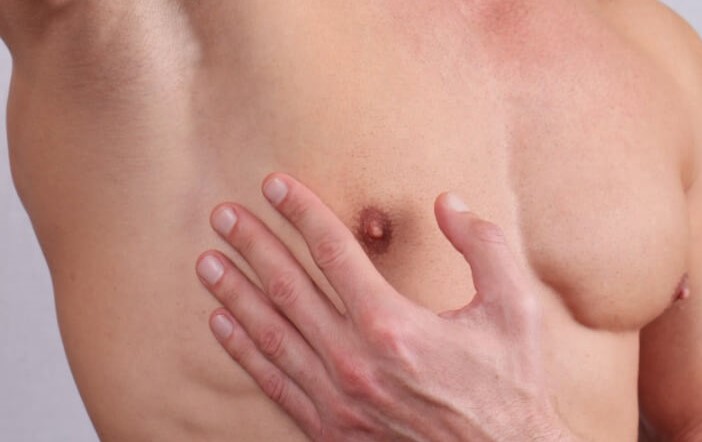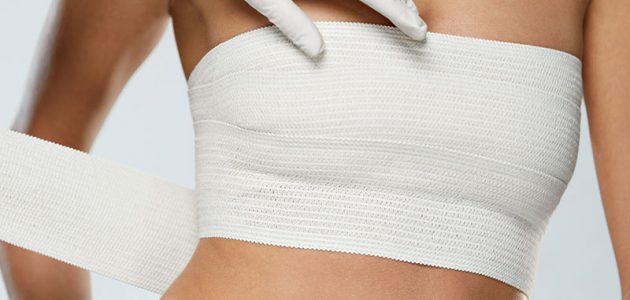Glow up İstanbul
Gynecomastia
Gynecomastia refers to the pathological enlargement of the breast in men. This phenomenon is caused by the growth of glandular tissue in the male breast and can be seen in about half of all adult males. Some types of gynecomastia can only be removed by surgery. Gynecomastia tendencies appear more often during a man’s life, but fade over time:

Neonatal gynecomastia:
About 60 percent of male newborns have nipple binding in the first week of life. Small breasts grow as babies come into contact with the mother’s estrogens through the placenta and breast milk. But normally these male breasts disappear after a few weeks or months
Puberty gynecomastia:
During puberty, some boys experience breast enlargement again. At this stage, the hormonal balance of the body changes again and there may be a short-term overproduction of estrogen, which is responsible for the growth of male breasts. This form of gynecomastia is also usually temporary.
Age gynecomastia:
This form of gynecomastia is very similar to overweight gynecomastia. Due to age, the rate of adipose tissue in the breast is higher. The aromatase enzyme, which is abundant in adipose tissue, converts the male sex hormone to estrogen, leading to breast enlargement.
Mentioned forms of the male breast are temporary, but the pathological form of gynecomastia is a permanent problem. In order to better treat this pathological form, it is necessary to look at its causes.
Things to consider before gynecomastia surgery Before the procedure, the surgeon will take a detailed anamnesis about your health condition and will talk to you in detail about the cause of gynecomastia.
You will also plan together how your new breast should look.
For a satisfactory result, it is important that the patient already has an ideal weight. The measure taken to reduce gynecomastia is only successful if there is no serious weight fluctuation after the surgery.
In addition, you should stop drinking alcohol and smoking a few days before the operation, and stay away from blood thinners and anti-inflammatory drugs.
Causes of Gynecomastia
Besides life-cycle forms of gynecomastia, a disproportionate enlargement of the male breast results in:
Hereditary predisposition
Chronic diseases (such as liver cirrhosis or kidney failure) cancers
Excessive long-term drug use (especially Marijuana and heroin)
Grooming products (some containing estrogen)
Weight gain (in this case, the rate of adipose tissue in the breast increases)
Taking medication (as some medications, antibiotics or antidepressants contain substances that affect hormone balance)
How does gynecomastia surgery work?
The reduction of gynecomastia is performed by our specialists during an operation under general anesthesia. A small incision is made in the areola of the nipple. After the incision is made, the glandular and adipose tissue and excess skin can be removed and then the breast can be reshaped according to the wishes discussed before the surgery. Thin cannulas are inserted into the incision, which are moved back and forth very quickly by a small motor, thus pulling the tissue out of the breast. This surgical procedure usually takes one to two hours and is very gentle on the tissue.
Although removal of glandular and adipose tissue does not eliminate the cause of gynecomastia, experience shows that unaesthetic male breasts do not recur after surgery.
Post-operative recovery process
As a rule, patients can return to work two to seven days after gynecomastia subsides in Turkey, if the job does not require heavy physical activity. However, patients should rest for at least a week to support the healing process.
A special compression belt will be worn immediately after the surgery. You should continue to wear this corset for the first three to four weeks to avoid possible complications.
Sauna sessions and heavy lifting should be avoided completely for up to six weeks after the surgery so that the scars do not stretch too much. After only three weeks, you can do light sports again.
Check Out Our Other Aesthetic Operations. . .

Breast Augmentation
The beauty ideal of a full breast, evoking an attractive décolleté, is considered by many to be the epitome of femininity. In fact, we experience over and over again in our daily practice that women who have breast augmentation surgery have stronger self-confidence and feel more free and happy.

Breast Lift
Every woman’s breast loses its firmness throughout her life. The reason for this is the decrease in the elasticity of the connective tissue and skin in the breast. When and to what extent this process begins varies from woman to woman. Besides age, other factors also play a role. These include:

Breast Reduction
Breast reduction is the ideal way to solve your breast problem elegantly. With breast reduction, you first alleviate the physical problems of a very large breast. As a rule, many other problems will be permanently resolved as you will feel confident and in tune with your body again.
Rediscover your beauty with Glow Up Istanbul!
AS GLOW UP, WE OFFER THE HIGHEST STANDARD

